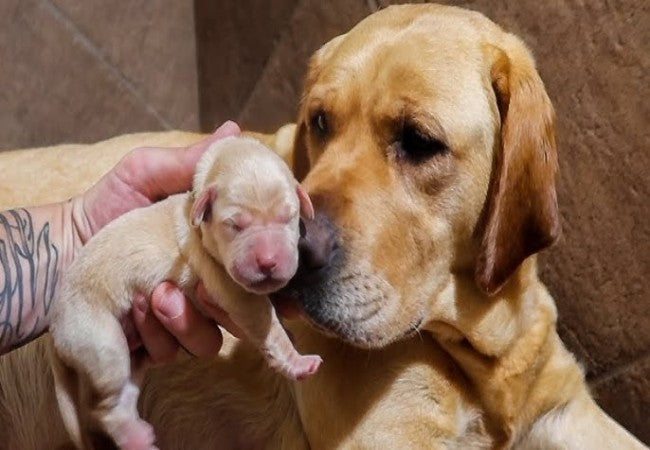Vet Approved Guide Caring for Newborn Puppies 2025 🐶🩺

In this article
Vet Approved Guide Caring for Newborn Puppies 2025 🐶🩺
By Dr. Duncan Houston BVSc
Caring for a litter of newborn puppies is one of the most rewarding—and challenging—experiences in pet parenthood. These fragile beings depend entirely on humans (or their mother) for survival. As a veterinarian, I’ve seen firsthand how the right care during the first few weeks can mean the difference between life and death. 🍼🐾
This guide will walk you through every stage of neonatal puppy care: warmth, feeding, hygiene, stimulation, and medical monitoring. You’ll also discover how Ask A Vet. 🩺
📅 Week-by-Week Puppy Development Milestones
- Week 1: Blind, deaf, cannot regulate temperature. Fully reliant on mom or human caregiver.
- Week 2: Eyes and ears begin to open. Still need feeding every 2–3 hours.
- Week 3: Starting to crawl, vocalize, and urinate/defecate on their own. Can begin gradual weaning prep.
- Week 4: Begin socialization and soft solid food introduction.
🌡️ 1. Maintaining Body Temperature (The #1 Priority)
Newborn puppies can’t regulate their own body temperature until around 3–4 weeks of age. Chilling is a leading cause of neonatal death.
🐾 Temperature Guidelines:
- Week 1: 85–90°F (29–32°C)
- Week 2: 80–85°F (26–29°C)
- Week 3: 75–80°F (24–26°C)
🔥 Tips:
- Use a heating pad under half the whelping box (not directly beneath pups)
- Monitor with a thermometer—avoid overheating
- Use snuggle toys or heating disks designed for pets
🍼 2. Proper Feeding (Colostrum + Formula)
💧 If the Mother Is Present:
- Ensure puppies are nursing every 2–3 hours
- Watch for weak pups (“runts”) that need manual help latching
- Don’t interrupt the colostrum period (first 24–48 hours)
🍼 If Bottle Feeding Is Required:
- Use a canine-specific milk replacer (not cow or goat milk)
- Feed with a puppy bottle or syringe (upright, belly-down position)
- Frequency: every 2–3 hours for week 1–2, every 4 hours by week 3
Use Ask A Vet to ensure proper dosage and hydration levels based on pup size. 📱
🚽 3. Help With Elimination (Stimulation Required)
Until about 3 weeks old, puppies can’t urinate or defecate without stimulation. After every feeding:
- 🧻 Use a warm, damp cloth to gently rub the puppy’s lower belly and genital area
- 🧴 Clean and dry after to prevent skin irritation
🧼 4. Keep It Clean: Hygiene and Bedding
- 🧺 Change bedding 2–3x daily
- 🧴 Disinfect the whelping box with pet-safe cleaner
- 🧻 Wipe puppies with a clean, damp cloth to remove milk, urine, and feces
📊 5. Monitor Weight and Growth
Weigh puppies daily using a gram scale and record it. Healthy puppies should:
- 🐶 Double their birth weight by 7–10 days
- 📈 Continue gaining steadily (~5–10% body weight daily)
Plateaus or weight loss are red flags—use Ask A Vet if this occurs. 🩺
🧠 6. Begin Socialization at 3–4 Weeks
- 🎶 Introduce soft sounds (gentle music, calm voices)
- 👋 Brief, supervised human interaction
- 👅 Touch paws, ears, and body gently to build trust
🧬 7. Know the Danger Signs
Contact a vet or use Ask A Vet if you notice:
- 🥶 Cold to the touch or crying continuously
- 🧪 Pale gums or dehydration
- 🍼 Refusal to nurse or sudden weight drop
- 🦠 Diarrhea, bloating, or vomiting
🌿 8. Calming the Mother Dog
Mothers can become anxious, overprotective, or stressed.🧴
📆 9. First Vet Visit (Around 4–6 Weeks)
- 🩺 Wellness check and physical exam
- 💉 First vaccine discussion (usually begins at 6–8 weeks)
- 🦷 Oral and eye development review
✅ Final Takeaways: Raising Neonates With Confidence






